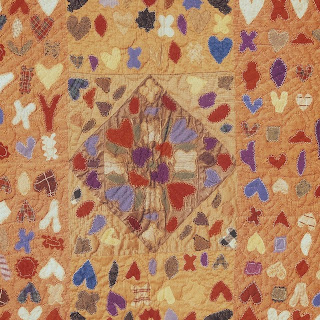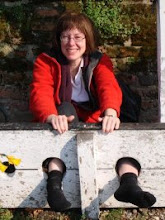When I was last in York in October, I had a browse in the Quilters Guild Library. One item that I discovered was a small booklet about Muriel Rose. I thought that it would be an easy matter to find a copy of this booklet - but found, on ringing the Crafts Study Centre, that all stocks had been sold and that it was now out of print.
So I was very pleased to find that this collection of essays is available on-line at:
http://issuu.com/studiohyde/docs/murielrose
Muriel Rose was director of The Little Gallery, where she selected what she considered the best of contemporary craft for sale. The Little Gallery "made an active and forceful contribution to the way that craft work was distributed and debated in the modern world".
The Little Gallery was at 5 Ellis Street, off Sloane Street in London. It opened in 1928 and closed in 1939.
We quilters know her best for her work with Mavis FitzRandolph to commission high quality quilts in Durham and Wales, via the Rural Industries Board, which were then sold in London.
I found this a very interesting collection to read, and will be keeping a copy for my research - maybe one day I will find an actual booklet...
We quilters know her best for her work with Mavis FitzRandolph to commission high quality quilts in Durham and Wales, via the Rural Industries Board, which were then sold in London.
I found this a very interesting collection to read, and will be keeping a copy for my research - maybe one day I will find an actual booklet...



















































